The Content and Language Integrated Learning Games activities are getting more and more popular and they have become an interesting activity that can be used while teaching English.
CONTENT AND LANGUAGE INTEGRATED LEARNING GAMES
Învăţământ gimnazial | Limbi moderne
Propus de: marcutatiana | 30.07.2022 10:51 | Revista cadrelor didactice nr. 88/2022 | 380 vizualizări
The Content and Language Integrated Learning Games activities are getting more and more popular and they have become an interesting activity that can be used while teaching English.
The acronym CLIL stands for Content and Language Integrated Learning and it refers to teaching other subjects such as Maths, art, music, science, geography, history, Physical Education, Religious Education and so on using a foreign language. The English teachers can use cross-curricular content in order to teach English. Thus, CLIL is focused on the learning of the foreign language and also on the learning of the content.
David Marsh, from Finland, was the one who coined the term CLIL in 1994, but teachers have practised the CLIL methodology in schools for many years even if they have not been aware of the term CLIL.
A teacher who brings content into his/her classes is said to deal with the area of Content and Language Integrated Learning. Teachers do not have to be geniuses to realize the benefits of CLIL in the improvement of language skills. They should also be aware of the fact that students do not need a high level of English to get engaged into CLIL activities. Teachers are also the ones who should adapt the materials in order to make sure that students are able to understand the content of the lesson, who should make sure that the language structures are always contextualized, who should reduce the teacher-talk and increase the focus on language skills.
CLIL may be said to be a very interesting way in which students may become motivated because focusing on the content, students are not assessed on their mastery of a grammatical structure, but on their ability to practise the structure in appropriate contexts. Unlike the content used in traditional language textbooks, which present the content in order to illustrate a specific language structure, the content in CLIL is important in itself, giving the students the feeling of achievement because they succeed in talking, writing about and coping with a rather complex material in a foreign language. Thus, motivation may be stronger than in other conventional approaches to language learning and the lessons may become more engaging and dynamic due to CLIL.
A very good course, which wonderfully takes advantage of the new technology and the popular CLIL methodology, is called Islands (a course for six levels) and it is published by Pearson. Besides the Phonics section, the lexical and grammatical syllabus, the cross-cultural lessons, the extensive reading, grammar summaries, a dictionary section, games, songs and stories, the course offers interesting CLIL activities and also an ample digital platform which is extremely attractive to both teachers and students. The course is motivating and suitable for the new generations of students who were born in the world of computers and who are always interested in finding new information in an engaging way.
The next game to be described, called “How many?”, underlines the way in which teachers can integrate Mathematics into their English classes. This is for young students and is designed in order to practise vocabulary items such as numbers (addition and subtraction) and vegetables and grammatical structures such as the plurals, developing listening, writing and reading skills.
The teacher should prepare a lot of vegetables flash cards (plastic toy vegetables or vegetables magnets can also be used) in order to use them during the lesson. The teacher presents all the vegetables on the flash cards to make sure that students remember them and then he/she splits the class in pairs. The teacher starts sticking some of vegetables on the blackboard and asks students to solve the additions and subtractions, writing them down on a sheet of paper as quickly as possible. The first two pairs that finish are asked to write and read their answers on the blackboards. The teacher checks their answers together with the other students, who also have to check their answers by having a careful look at the blackboard and by using a coloured pencil. The pair that spelled the numbers and the vegetables correctly or making very few mistakes is the winner.
Another game that teachers can use in order to teach food, drinks, fruit and vegetables integrating healthy food habits into the lesson, is called “Healthy Food”. The game aims at developing students’ understanding of healthy and balanced eating habits and provides practice in vocabulary related to food, drinks, fruit and vegetables and a very important grammatical structure such as the modal verb “should/shouldn’t”. The skills developed during the games are reading, writing, listening and speaking.
The teacher needs time to prepare the materials necessary for the development of the game. He/She has to prepare two large sheets of paper, sticking pictures of food, drinks, fruit and vegetables on it. First of all, teacher has to split the class into two groups (group A and group B). The teacher gives each group a large sheet of paper and explains to the students that they have to circle and write the healthy food/drinks using a green marker and the unhealthy food/drinks using a black marker. After students finish circling and writing the healthy and unhealthy food and drinks on the large sheets of paper, each member of the two groups has to present orally what we should eat or drink in order to stay healthy and what we should not eat or drink because it is not healthy for our body (for example, a student can say “We should eat apples, but we should not eat French fries”). Students’ large sheets of paper can be stuck on the blackboards for a better visual contact. In this way, teacher can also check students’ spelling.
The game entitled “Colour the mosaic” is a very enjoyable way in which students can be introduced to the world of art. Students have the pleasant opportunity to learn English through art, practising their artistic skills as well as language skill such as listening and speaking. They can also practise their vocabulary to describe a painting, adapted according to the language level of students (colours, shapes, objects/people/animals in the painting) and a lot of grammatical structures that students have to use in order to describe what they see in the painting.
The teacher has to prepare the materials necessary for the lesson beforehand. He/She has to find a copy of the real painting or other paintings, which belong to the same painter or technique, in order to show it/them to the students. The teacher has to make copies of the worksheet that students will receive during the lesson.
Firstly, the teacher tells the students a few things about the technique of mosaic and shows them a few paintings which were painted using mosaics. Secondly, the teacher has to divide the class in pairs and gives them a black and white copy of a mosaic painting, which has not been shown to the students. Students have to pay attention to the teacher’s instructions, follow them carefully and do exactly what he/she says. For instance, the teacher may say “Colour all the circles red!” or “Colour the fish yellow!” and so up to the moment when students finish colouring all the painting. Then the teacher shows the students the copy of the painting, comparing students’ paintings with the copy of the real one. Students have to describe the differences and the similarities between their paintings and the copy of the real one.
In conclusion, CLIL games can be considered a very useful method to attract students and to make them get engaged in the lessons. Teaching a foreign language using other subjects can be strongly rewarding for teachers and extremely fascinating for students.








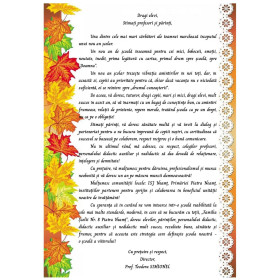
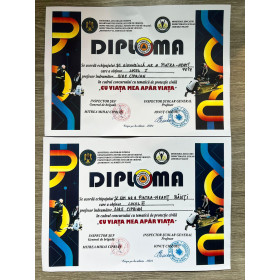

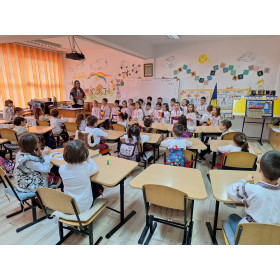




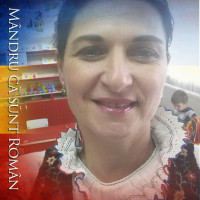

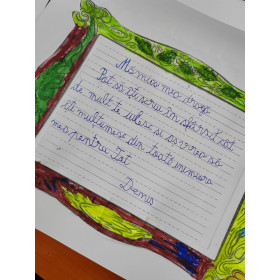



Comentarii (0)
Nu există niciun comentariu
Autentificaţi-vă pe site pentru a putea publica un comentariu.